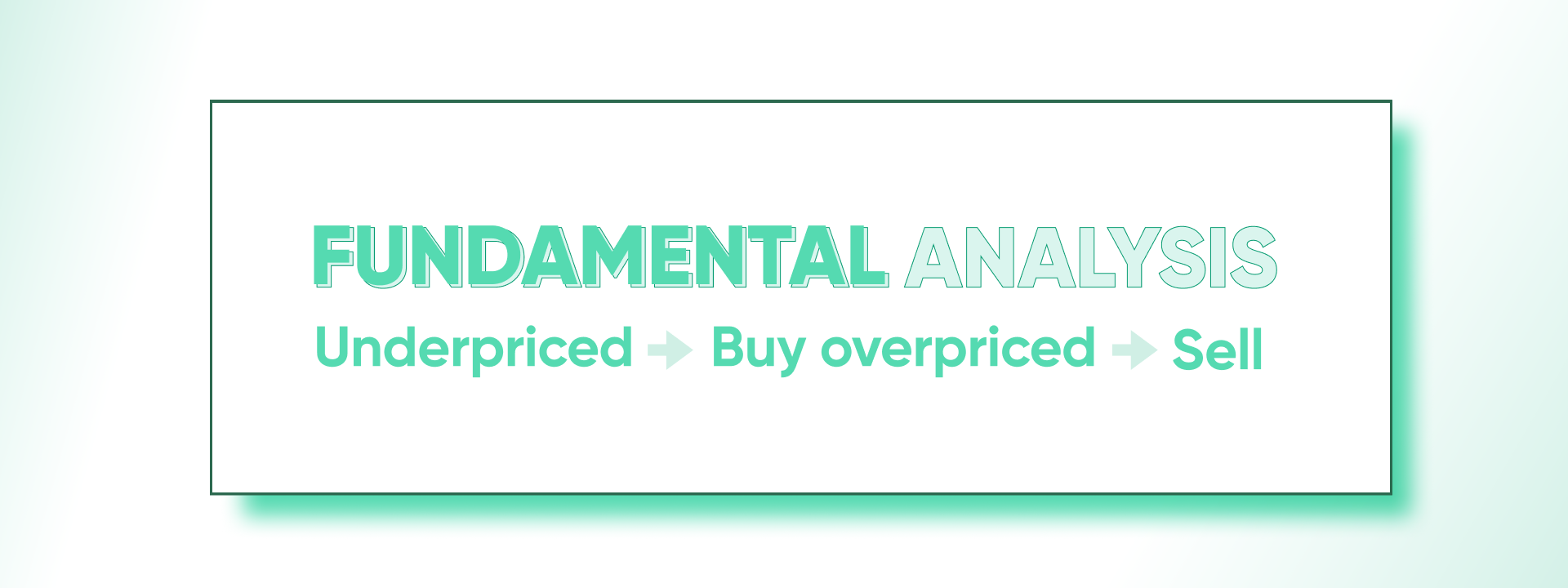What is fundamental analysis?
Fundamental analysis is a valuation method used to assess the value of a currency pair in forex trading. It is based on the idea that all assets have a fair market value and tend to correct back to that value. When looking at currencies, movements are largely based on supply, demand, and, to a lesser degree, market sentiment. Fundamental analysis traders try to identify if assets or instruments are overpriced or underpriced, placing their trades accordingly.
How to trade forex using fundamental analysis?
Using fundamental analysis to understand whether a currency pair is overpriced or underpriced helps traders decide which position to take. If the instrument is overpriced then the trader will go short, or sell the instrument, expecting the price to drop back to the fair value. Conversely, if the instrument is underpriced, the trader will place a buy trade expecting the price to climb back to the asset’s fair value.

What is the difference between technical and fundamental analysis?
Fundamental analysis has a much wider scope than technical analysis, which focuses primarily on data, price history, and trends. While technical analysis deals with statistical trends and patterns in the price of a currency, fundamental analysis tries to determine countries’ economic outlook by looking at macroeconomic data and news relating to the instrument they are interested in.
What do fundamental analysis traders look at?
To evaluate an asset’s fair market value, fundamental analysis traders look at publicly available information, including, but not limited to, financial statements, reports, and news. Beyond that, understanding how each type of data affects an economy and the underlying currency or assets is critical.
Some of the economic indicators that are used in fundamental analysis include:
- Financial reports – released by governments or companies
- Macroeconomic reports – interest rate statements, unemployment reports, monetary policy announcements
Other data – speeches from central bank heads, speeches from heads of state
What do fundamental traders need to know?
One of the first drawbacks of fundamental analysis is that it requires extensive knowledge of geopolitics and macroeconomics, as well as the relationships between currencies and economies. Another drawback is the amount of time and effort involved in gathering said information. As stated earlier, although the information is public, you’ll need to find reliable and up-to-date sources.

Fundamental analysis, unlike technical analysis, may not be optimal for all types of traders and strategies. This is because it is intended to predict larger price movements or more significant reversals. Swing traders, scalpers, or day traders looking for small price movements may not fully benefit from fundamental analysis.
To keep you in the loop, both our app and webtrader include an integrated research portal, allowing you to stay up to date on the latest news and analysis.
